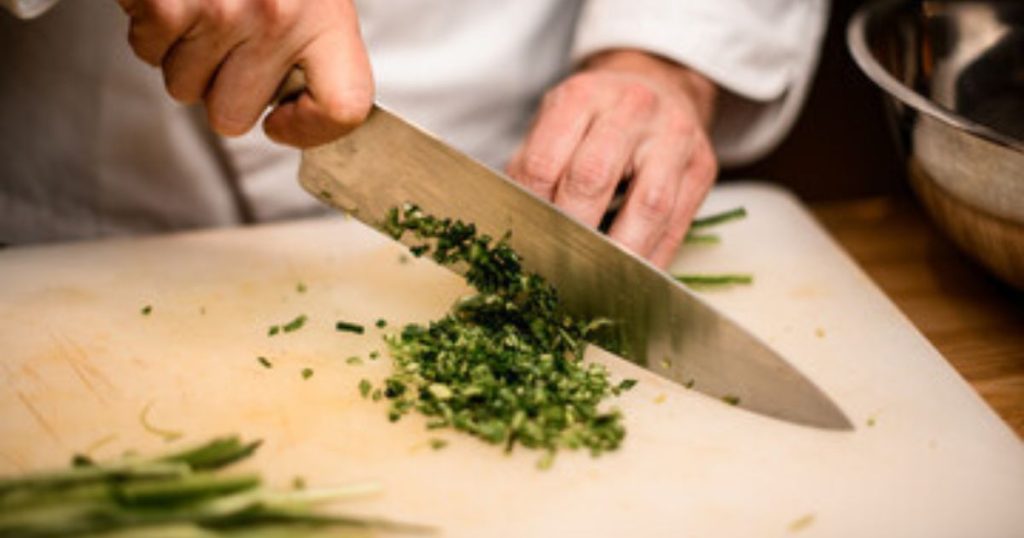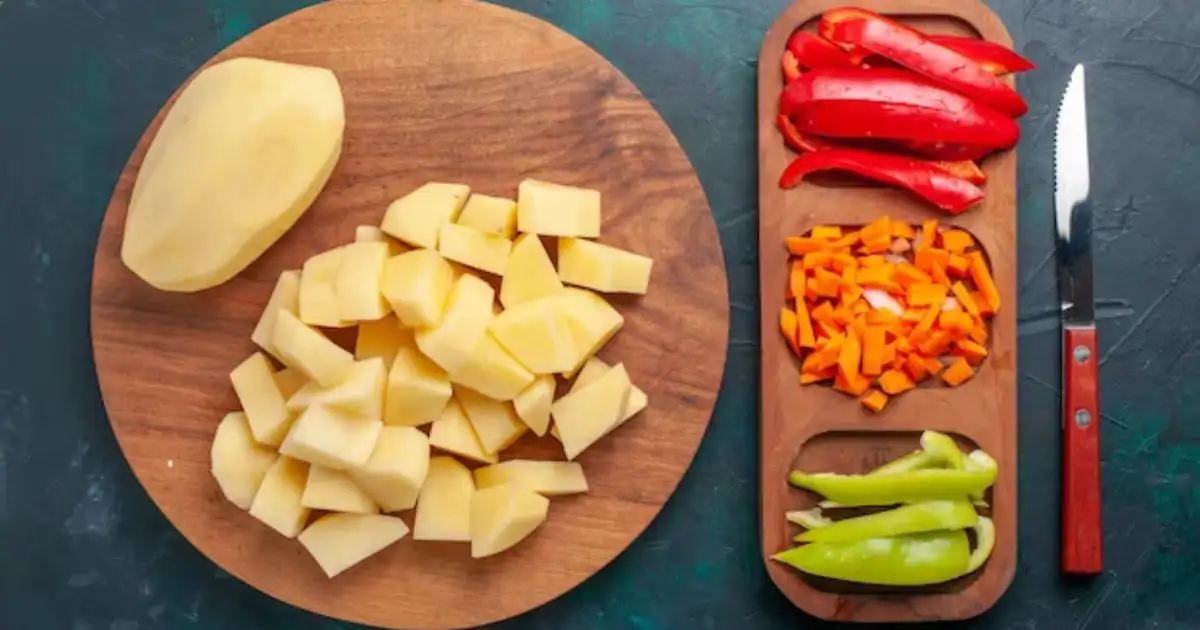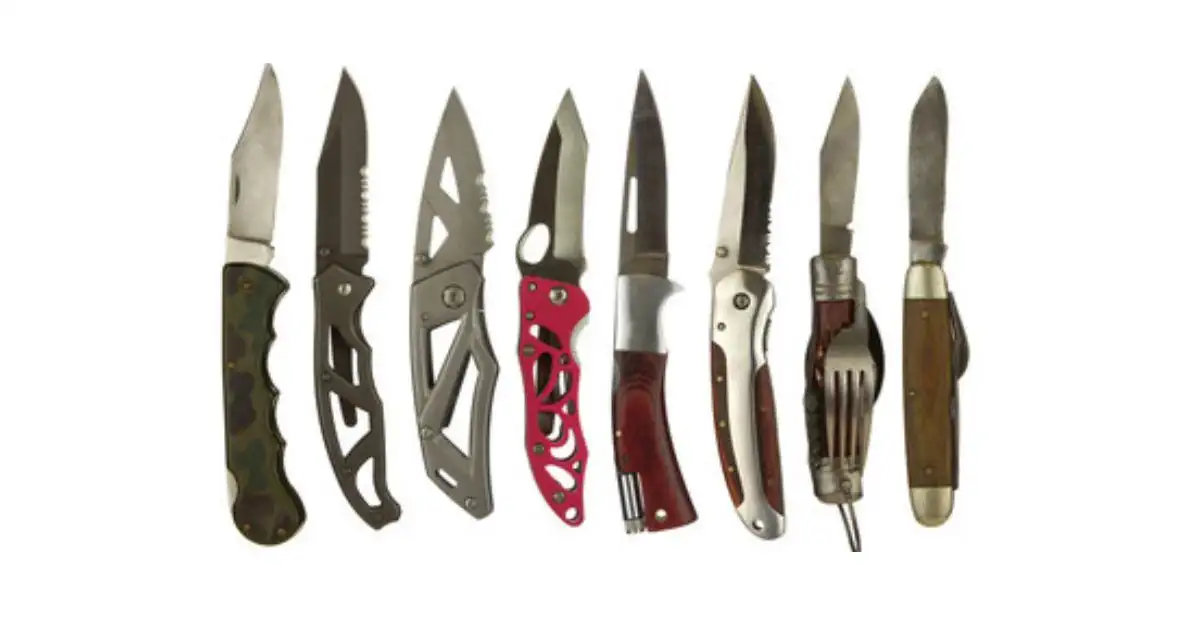what kitchen knives do I need?
Table of Contents
ToggleIntroduction:
An important aspect of this busy culinary delight study is the use of kitchen tools. Kitchen knives are an essential requirement in any kitchen since they cut down on and increase the taste of food. While many types of knives are necessary for kitchens, we will talk about three types of knives in this guide that are necessary for any kitchen, which are santoku, paring, and chef knives.
Chef Knife

chef’s knife is considered a special knife that is designed for special tasks in the kitchen because it has the quality of a sharp blade and a rounded edge. It is mainly used for slicing, dicing, chopping, and mincing herbs, which are completed with the help of a chef’s knife.
Common Sizes and Choosing the Right One
8-Inch Chef’s Knife:
- It is available in the most common size, which is good and beneficial for everyone. It is commonly used in slicing vegetables, etc.
- 10-Inch:
- Offers more blade length, suitable for those who prefer a larger knife.
- It is well-suited for handling larger ingredients and has an increased cutting surface.
- 6-Inch:
- compact version, perfect for those who favor precision and control.
- Ideal for smaller kitchens or individuals with smaller hands.
- Choosing the Right Size:
- Consider the size of your hands and your comfort level with different lengths.
- For a versatile everyday knife, an 8-inch chef’s knife is often recommended.
- Personal preference and the tasks you frequently undertake should guide your choice.
Versatility and Various Tasks it Can Handle
- Slicing:
- Smoothly slice along proteins like chicken or beef with clean, even cuts.
- Dicing:
- Ideal for creating regular vegetables or fruit for salads, stir-fries, and more.
- Chopping:
- The weight and curve of the blade ease the chopping of herbs, nuts, and vegetables.
- Mincing:
- The design and sharp edge make it the best choice for mincing garlic, herbs, or shallots.
- Deboning:
- While not a basic task, a chef’s knife can be used for light-bone tasks, such as removing chicken breasts.
Smashing Garlic:
- The flat surface of the knife can be used for squeezing garlic cloves, making them easier to peel and prepare.
Carving:
If necessary, a chef’s knife can handle slicing, especially with smaller cuts of meat.
The Paring Knife: Precision in Your Palms
- The paring knife is considered ideal for the kitchen due to its durability, speed, and surprising clarity. Designed for difficult tasks, this knife is a must-have for any culinary fanatic. The paring knife is different by its short blade, usually around 3 to 4 inches, and is designed for detailed work where control and precision are paramount.
Ideal Uses for Precision Cutting
- Peeling:
- Navigate the curves and contours of fruits and vegetables, efficiently removing skins without excessive waste.
- Trimming:
- Trim the fat, remove blemishes, and precisely shape the ingredients for a polished presentation.
- Detail Work:
- Perfect for complicated tasks such as purging, removing seeds from chili peppers, or carving decorative designs.
- Garnishing:
- Ideal for creating enhanced garnishes from fruits, vegetables, or herbs to increase the visual appeal of dishes.
- Specific slicing:
- Execute fine slices with control, whether it’s creating thin strips of citrus zest or thinly slicing garlic.
- Pitting and coring:
- Navigate around pits and cores with ease, making it an excellent tool for preparing avocados, apples, and more.
- Hulling:
- Remove stems and cores from berries or tomatoes without sacrificing the edible flesh.
Choosing the Right Size for Your Needs
3-Inch Paring Knife: Compact Precision
- Ideal for those who prefer a smaller, more maneuverable knife.
- Well-suited for intricate tasks and precision cutting.
- 4-Inch Paring Knife:
- Versatile and Maneuverable
- Strikes a balance between agility and blade length.
- Suitable for a range of tasks without compromising on control.
- Choosing Based on Task:
- Consider the specific tasks you frequently undertake in the kitchen.
- For detailed work, a smaller paring knife may be preferable, while a slightly larger one offers versatility
The Santoku Knife: Harmony in Every Slice
The Santoku knife is a Japanese culinary curiosity distinguished for its flexibility and precision The name “Santoku” translates to “three virtues” or “three uses,” representing its expertise in slicing, dicing, and chopping. With a shorter, sharper blade and a special shape, the Santoku is designed to bring ability and ease to various types of kitchen tasks.
Japanese vs. Western Style Santoku Knives
Japanese Santoku:
- Blade Shape:
- Typically shorter and wider than its Western counterpart.
- Often features a flatter profile.
- Blade Construction:
- Thinner blade for precise slicing.
- Traditionally crafted with harder steel, it provides excellent edge retention.
- Ideal for:
- Precise vegetable and fish slicing.
- Lighter, more delicate tasks.
Western Santoku:
- Blade Shape:
- Slightly longer with a more curved edge.
- May have hollowed-out sections (Granton edge) to reduce sticking.
- Blade Construction:
- Slightly thicker blade, providing more robustness.
- Often made with softer steel for easier maintenance.
- Ideal for:
- Versatile use in both vegetables and meats.
- Tasks that might demand a bit more heft.
Choosing between Japanese and Western:
- Consider your preferred cutting style and the tasks you commonly undertake.
- Japanese Santokus excel at precision tasks, while Western ones offer a bit more versatility for various ingredients.
How a Santoku Complements a Chef’s Knife in the Kitchen
- Versatility:
- While a chef’s knife is made for all work, a Santoku special is for specific tasks, offering a focused and beneficial alternative.
- Precision Slicing:
- The Santoku’s angular sword is proficient at precise slicing, making it ideal for elegant cuts like sashimi or paper-thin vegetable slices.
- Vegetable Preparation:
- The smaller blade and rounded edges of the Santoku make it a particularly strong match for handling vegetables and permit swift and precise chopping.
- Reducing Cross-Contamination:
- Having both a Santoku and a chef’s knife recognized for dedicated use in separate tasks reduces the risk of interference when preparing different ingredients.
- Ergonomics and Control:
- The Santoku’s design, with its shorter length and blandish feel, provides a different feel in hand, offering more hold and control balance than the longer and more curved chef’s knife.
- In the culinary symphony, the Santoku knife harmonizes with the chef’s knife, offering a nuanced and specialized performance. Together, they create a dynamic duo that caters to a spectrum of kitchen tasks, ensuring that every cut is executed with precision and finesse.
Knife Maintenance and Care: Ensuring Blades Stay Sharp and Safe
A. Proper Cleaning Techniques
- Clean knives by hand with soft dish soap and clean, clear water.
- Do not use hard scouring pads or harsh detergents that can harm the blade.
- Clean knives instantly after use to stop food particles from drying on the blade.
- Dry the knives rapidly to prevent corrosion.
- Dishwashers can cause knives to knock against other utensils, leading to dulling and potential damage.
- The high water pressure and hard detergents can also damage the blade over time.
- Use a soft sponge or cloth to clean knives, ensuring that harsh materials are not used that could damage the blade.
B. Honing vs. Sharpening
- Regular honing helps keep the knife’s edge sharp between sharpening periods.
- Use a honing rod or honing steel to renew the edge and correct any microscopic bends.
- Sharpen knives when honing; no lengthy replacements will replace their sharpness.
- Use a whetstone, a sharpening rod, or an electric sharpener, based on your skill level and perfection.
- Hone your knife before or after using it.
- Sharpen as needed, depending on usage. For regular home cooks, this might be every few months.
- Consider professional sharpening services for a comprehensive restoration of the blade.
Storage and Safety Tips for Maintaining Knife Longevity:
- Use a knife block, magnetic tape, or in-folder developer to keep knives separated and save them.
- Stay away from knives in folders where they can bang against other utensils.
- Use knife guards or blade sleeves to save the edge when storing knives in a drawer or when transporting knives.
- Use wooden or light cutting boards to reduce the impact on the knife edge.
- Avoid hard surfaces like glass or stone, as they can accelerate blade dulling.
- Use proper cutting techniques to minimize the risk of injury.
- Spend money on cut-again gloves for added protection, especially during demanding tasks.
- Regularly inquire about knives for any signs of damage, such as chips or bends.
- Address any issues properly to prevent further damage.
- Never leave knives submerged in soapy water. It not only damages the blade but also poses a safety risk when reaching into the water.
Conclusion:
In the complicated dance of flavors and tastes within the kitchen, the selection and care of your knives stand as an important factor in developing culinary skills.
As we negotiate the realm of important kitchen knives, it becomes proven that the right tools are necessary for transforming raw ingredients into gluttonous masterpieces. The chef’s knife, a reliable generalist, takes center stage, smoothly handling many tasks.
Venturing into the realm of specialty knives, the Santoku emerges as a Japanese virtuoso, bringing precision and efficiency to slicing, dicing, and chopping. Together with the versatile chef’s knife, they form a duet that navigates the diverse landscape of culinary creation with ease.
Yet, the journey doesn’t end with acquisition; it extends to the realm of maintenance and care. A well-designed knife is not a common tool but a complement to your culinary journey. By holding proper cleaning techniques, understanding the variation of honing versus sharpening, and applying thoughtful storage and safety practices, you spend money on the longevity and sharpness of your knives.
In conclusion, the symphony of flavors begins with the right kitchen knives, each contributing its own unique note to the composition.




